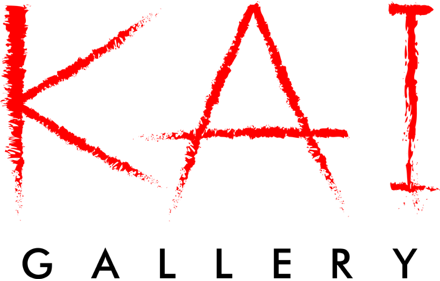Hui Chi Lee’s Artwork: Calligraphy in Motion
HIGH END WEEKLY
April 2016
Hui Chi Lee’s solo show “Lian: Lian” is now on display until May at Fitzgerald Fine Arts in Soho, New York.
The big apple is a place where art meets culture, and no better places can this be truer than downtown Soho, the East Village, and of course, the Chelsea area. Back in March, we visited FitzGerald Fine Arts (a Soho gallery which showcase contemporary Chinese porcelain and ink painting), and had the opportunity to meet Taiwanese artist Hui Chi Lee. This was Ms. Lee’s first show in New York, where she presented a new body of hand drawn graphite pen and colored pencil works on paper, as well as a soaring site specific sculptural installation, entitled “Lian, Lian.’ The exhibit was filled with energy, and a modern spirit, which reflected her abstract paintings that can somehow be compared to “Calligraphy in Motion”. In part, her latest series is a true reflection on Taiwanese cultural traditions that can seem oppressive in contemporary society.
High End Weekly™: How was it growing up in Taiwan? And what were your early influences as an artist?
Hui Chi Lee: I essentially grew up in my mother’s design studio. She inspired my eye with every details from the fabric on the floor to the mannequins mounted high above. Her painstaking attention to detail never left me. Art and hand craft informed my desire to become a painter, artist and sculptor. “Lian: Lian”, my current show at Fitzgerald Fine Arts, is in homage to her and my large family.
HEW: Your body of work is heavily compiled with metaphoric messages. Is that purposeful or is it part of your consciousness?
Hui Chi Lee: Part of it is a spiritual meditation on reincarnation, part and parcel of my culture.
The use of hair is metaphorical for long-lasting values and questions about life on earth.
The tension between the physical and spiritual realms, if you will.
HEW: You currently have a show at FitzGerald, a contemporary fine arts gallery in Soho where you’re showcasing a new body of hand drawn graphite pen and colored pencil works on paper, as well as an impeccable sculptural installation, entitled “Lian, Lian.’. Tell us about this project.
Hui Chi Lee: The title of series “Lián; Liàn,” derives from a pair of Chinese homophones which, depending on the context, mean “to connect” and “to enchain.” On one hand, these large-scale drawings explore the tensions and dynamics within human relationships. On the other, they explore how these same forces may constrict or enchain humans when negative forces come into play. While this series is in part a reflection on Taiwanese cultural traditions that can seem oppressive,I believe it can be applied more broadly to the human experience.
Hui Chi Lee: Hair and chopsticks are evident motifs in this series. In Chinese tradition, lengthy hair symbolizes longevity. Hair signifies the duration of a life span, an expanse of time of which we are often hardly aware. While we may acknowledge the finitude of life, time is envisioned as somehow endless. Humans favor stability and continuity. Thus, even when one’s comfort and status is threatened or entangled by a chaotic environment, ambivalence seems inevitable. Color is introduced here in a symbolic, metaphorical way. Red symbolizes both a warning and an awakening moment in life.
HEW: Are hand drawn graphite pen and colored pencil works on paper an investment? By its nature, paper is fragile, how should collectors care for that type of work?
Hui Chi Lee: All of my work is 100% archival, from paper to plexiglass. As with all artwork, placing it out of direct sunlight is always a good idea.
HEW: This is another two-part question … Can you shed some light on what you meant regarding your earlier work “Moving Corpse and Walking Flesh” when you said “Regardless of differences between nations and social structures, the disproportionate emphasis on consumerism and a lack of consideration given to spiritual dimensions have placed a heavy burden on contemporary life. Humans seem trapped in a never-ending spiral of materialistic desires and endless wants, and our craving to consume now turns on the subject to consume the spirit”. Can this, in part, be also said about the current state of the art market?
Hui Chi Lee: I have selected the qualities we associate with mannequins—plastic and figure-like, but inanimate and anonymous–as a vehicle to prompt a discourse on these seemingly contradictory but connected conditions. The randomly amassed mannequin-like figures in these drawings lack self-determination and appear powerless, much like many vulnerable and immobile human beings in today’s society. I want to encourage the viewer to consider this human condition in a critical and holistic manner. The answer depends on the viewer’s own perceptions and projections. My work serves as a visual riddle for each viewer to decipher. The elements in each drawing seek to convey the imperceptible influence that an inherited tradition can have on one’s mentality, forming core beliefs that are difficult to break.
HEW: I understand that you are currently teaching applied arts at the North Carolina Appalachian University. What do you tell your students about the future of contemporary art?
Hui Chi Lee: My students are always working within the context of their generation. I encourage them to explore the world and their place in it.
HEW: When you travel around the world, what do you look for in these different cultures? What are your go-to museums, monuments, and galleries around the globe?
Hui Chi Lee: It is the moments that I least expect to happen that I become more inspired by. In short, it is in the small moments and details that we experience things in a new way. This is what I hope to capture in my new body of work.

